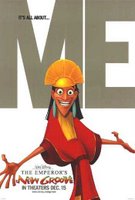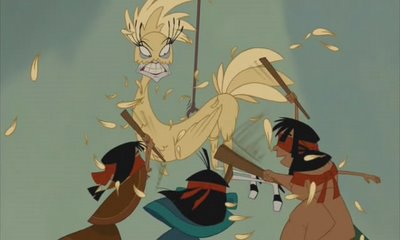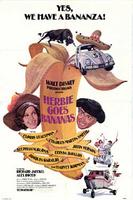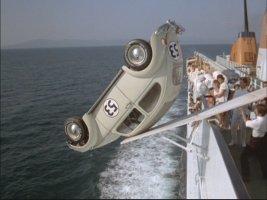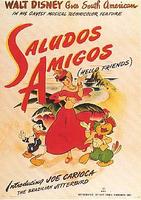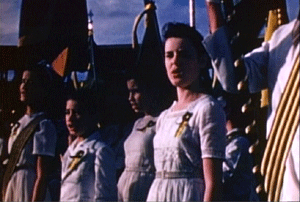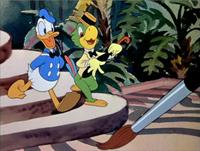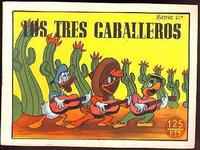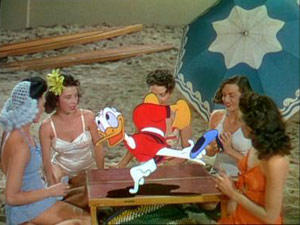Zorro-Disney Series (Season 1)
Zorro (1958) is a series created by the Walt Disney Company based on the stories of Johnson McCulley. Disney decides to continue the Zorro tradition that by the time has been going on for more than 30 years. Most of its direction is credited to Norman Foster, however, the series is a collaboration with other directors such as Lewis. R. Foster, Robert Stevenson, John Meredith Lucas, Charles Barton and Charles Lamont, who put together two seasons of about fifteen to twenty hours each, making this series the longest Zorro storyline in the tradition, and also the most popular one (at least before Bandera's interpretation of Zorro in 1998). Though of its popularity, this series continued to be cataloged among commercial B-movies, together with previous serial versions such as Republic Pictures' series. Though this series length requires creating more stories and additional characters which differ from the first Zorro movie, this incarnation of Zorro might be one of the most traditional ones and the closest to the original version since Johnston McCulley himself was involved in the development of the serial.
Norman Foster take us to the traditional time and location of McCulley's "The Curse of Capistrano". It is 1820 in the old Spanish California and Don Diego de la Vega (Guy Williams) has just arrived from his temporary stay in Spain to Los Angeles. Even before the ship gets to the pier, he and his mute assistant Bernardo (Gene Sheldon) are informed about the tyrannical government that Capitan Monastario has imposed to oppress the poor, the Indians, and the just blue-blooded aristocrats of the region. Don Diego believes that his duty as a loyal subject is to defeat all of the Crown's enemies, and to do so he will hide his intentions behind the mask of Zorro, while pretending to be a coward man interested only in literature and music in front of everyone else, even in front of his father Alejandro de la Vega (George J. Lewis). But he is not fighting alone. Bernardo who is also highly skilled at sword and whip fighting adopts a second identity to help his master (Bernardo pretends to be a silly deaf-mute instead of only mute but smart) and his fast and well-trained horse called Tornado will make of Zorro an invincible legend.
California is presented as a beautiful place to live in and to take advantage of for people around the world. Its location, resources, but also its instability as a colony of the Spanish empire after the Mexican emancipatory revolutions have attracted the most ambitious men who will try to use their influence to destroy anyone who steps on their way. Spanish occupying positions in the highest power hierarchies because of their names and appearance reflecting aristocratic or even royal ancestry become Don Diego/Zorro's nemeses. Don Diego, however, does not condemn the special privileges of being aristocrat or Spanish, neither he critiques colonialism. The problem arises when those are corrupted or lead to unacceptable treatment. What is acceptable or what is not is obviously determined by the elites, thus things like increasing taxes for the poor and the rich is considered unjust, but making indigenous work without any pay for the church's missions or as servants in the aristocrat's houses are seen as not only as just, but they are the necessary means to guide the Indians towards civilization.
A plot in support of European elitism is a characteristic of the traditional Zorro movies because of the period in which it takes place when Spain had legitimate control over California. However, in this series, the underlining "good" social constructions imposed on Californians by the Crown are challenged as the storyline goes on, and the elites (like the De la Vega family) will use their powerful influence to protect and differentiate their Californian from Spain.
Don Diego opposes the enemies of the Crown, but on top of it, as Zorro, he fights in the name of California, even if this means breaking the conventions of his aristocratic class and of his Spanish roots. During the first quarter of season one, Zorro fights the corrupted Captain Monasterio, but after defeating him, new threats appear to destroy the beauty and wealth of California, and the tranquillity of its people. These new enemies are each time people closer in the hierarchy to the Crown and those conflicting loyalties develop in Zorro and in all people of the village a stronger feeling of patriotism but not towards Spain, but towards California. The Californio identity rises as Zorro also become part of California's cultures through legends and songs. While children dress up like Zorro fighting with swords made out of wood, Zorro, the De la Vega family and many other Californian aristocrats get ready to go on a civil war against those trying to destabilize the peace of Los Angeles and the rest of California. Soon they will realize that the enemy is the appointees of the Crown themselves.
The last part of the first season tells us a lot about the construction of the Californio identity which becomes more visible because of the tensions of a possible civil war. The Californio identity and patriotism appear as the civil war creates a sense of "otherness" towards the foreigner. Interestingly, the dual identity of Don Diego/Zorro seems to fade away under these circumstances making Don Diego act as Zorro without the need of wearing the mask to cover his face. He starts to get more involved in the matters of California's governance, he tricks and fights his enemies, and he opposes injustice, whether this comes from criminals or if this part of the Spanish law. The Californio identity is also defined in relation to other identities. Though that in many aspects such as in culture and traditions California is a mix of Spain and Mexico, Californians consider themselves totally different from both. This is especially true after we start hearing about the Mexican independence war. From here Disney made clear that California is not part of those newly independent Mexican states mentioned in the series. And despite the fact that people know they are subjects of the Spanish King, the attempts to control and exploit the people and resources by every Spanish that arrives in Los Angeles will soon make all Californians remove the "Spanish" from Spanish Californio when referring to themselves. One thing can be clear, California might separate itself from the Mexicanidad, but it cannot escape its own Latin American essence.
One of the additions Norman Foster made to the original Zorro storyline is introducing the character of "The Eagle". Like Zorro, the Eagle has a second identity. During the day he is Jose Sebastian Varga, the new California's Magistrado, but at night he becomes the Eagle, a far-right wing Galindo that wants to re-built Spain's lost grandeur. For that, the Eagle will try to take control of California and sell it to other countries such as England, France, and Russia. England and France retire their offers when they realize that Varga lied about the state of California, but the Russian count retires only after he knows the people cannot be contained even with force.
This first part of the Disney Zorro portrays California in interesting ways. For the language and the culture, it perfectly fits under the Latin American umbrella, but at the same time, Californians have developed a totally different identity. Zorro is the personification of that identity and its evolution. We see that as the threats against California become sounder with the civil war, the courage and mobility characteristic of Zorro (performance of Latino personality) show up not only in the unmasked Don Diego but in all the patriotic people trying to defend California, from the richest to the poorest. California/Latin America is as well the scenario in which different countries expose their weaknesses and strengths. We see a Europe in decay trying to take control of California because of its gold, its haciendas, its wine, and everything that makes it seem like a paradise. We are also exposed to the idea of a growing Mexico approaching with its revolutionary ideas, the fear of the little left from Spain in California.
Like other Zorro incarnations, the plot of Disney Zorro implicitly projects events in history and its effect on Hollywood. Douglas Fairbanks' Zorro provided Latin America and California with a hero right after the Great War. This renewed Zorro appears after the Second World War after which European countries became dependant on The U.S wealth, just like it happens in this series, though California is not considered part of the United States yet.
Labels: disney, performativity, power, zorro










